How to Make Oven Gilled Chicken Not Smell
Chicken can get pretty boring fast. You might've tried every healthy chicken recipe under the sun, and yet, you're stuck with rubbery, tasteless, boring meat. What gives? If you're not prepping your chicken and cooking it correctly, you're at risk of being left with a paltry protein—but it doesn't have to be this way. There are some tricks you should always follow when preparing poultry. Stick with these, and figuring out how to cook chicken will be way less of a mystery.
To help you work on your kitchen skills and cook poultry perfectly, we've rounded up the common mistakes people make when cooking chicken, so you know what to avoid once meal prep rolls around.
And for more, here's What Happens to Your Body When You Drink a Smoothie Every Day.
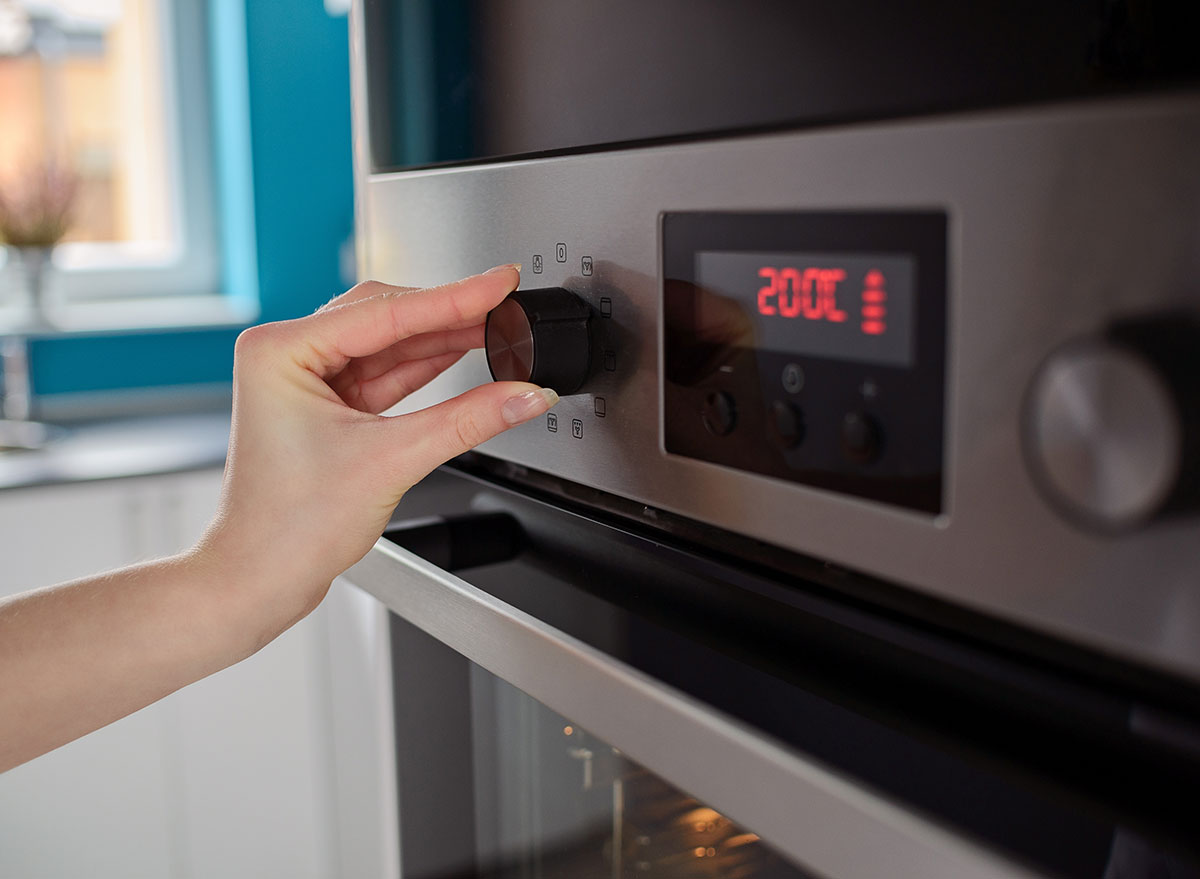
The secret to making sure your chicken doesn't turn out overdone and rubbery is to sear it in a pan on medium-high heat and then finish cooking it in an oven at a lower temperature, says Daniel Shemtob from TLT Food, which has multiple restaurant locations in California. That way, it will still reach the needed internal temperature while remaining juicy, he says.
RELATED: Sign up for our newsletter to get daily recipes and food news in your inbox!
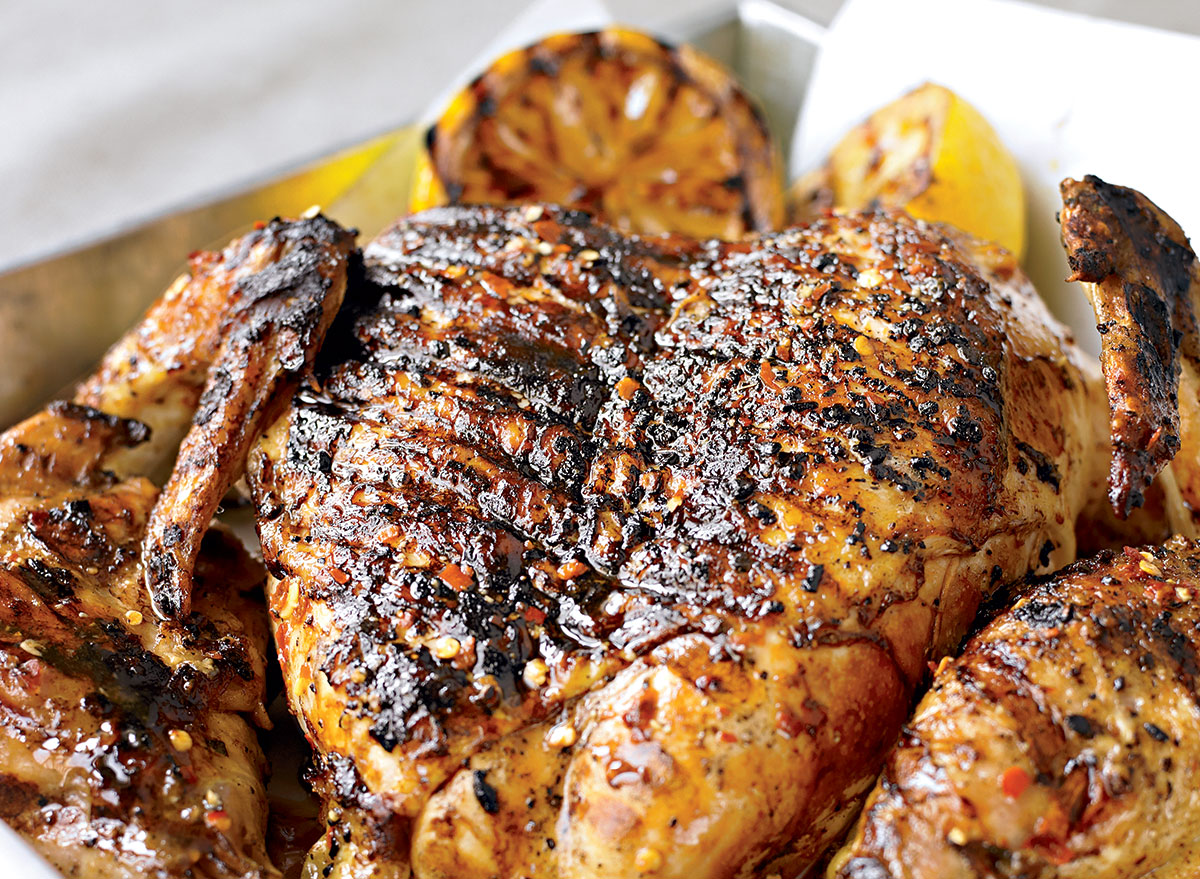
Drop the bottled barbecue sauce! All you need for a perfectly juicy bird is a brick or two and some aluminum foil. The extra weight helps press the bird evenly—and forcefully—against the grill, which translates into a juicier bird with crispy skin—a win-win! We love this Chicken Under a Brick recipe for a true chicken feast that couldn't be easier to make.
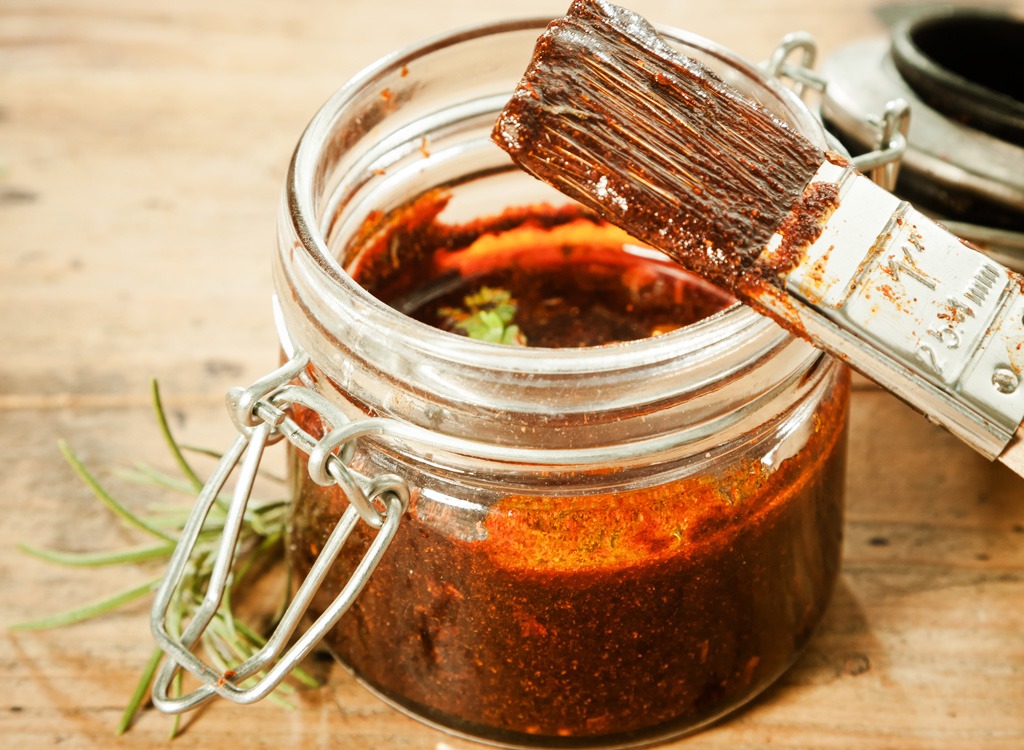
Wes Whitsell, the executive chef at Manuela in downtown Los Angeles, suggests that you stab the chicken breast with a fork if you're grilling it; this will help the marinade penetrate the chicken breast. A good marinade mix he suggests: lots of olive oil, lemon zest, lemon pepper, cayenne, paprika, and a touch of honey.
Not sure where to start? You can't go wrong with these 8 Chicken Marinade Ideas for Deliciously Juicy Chicken Breast.
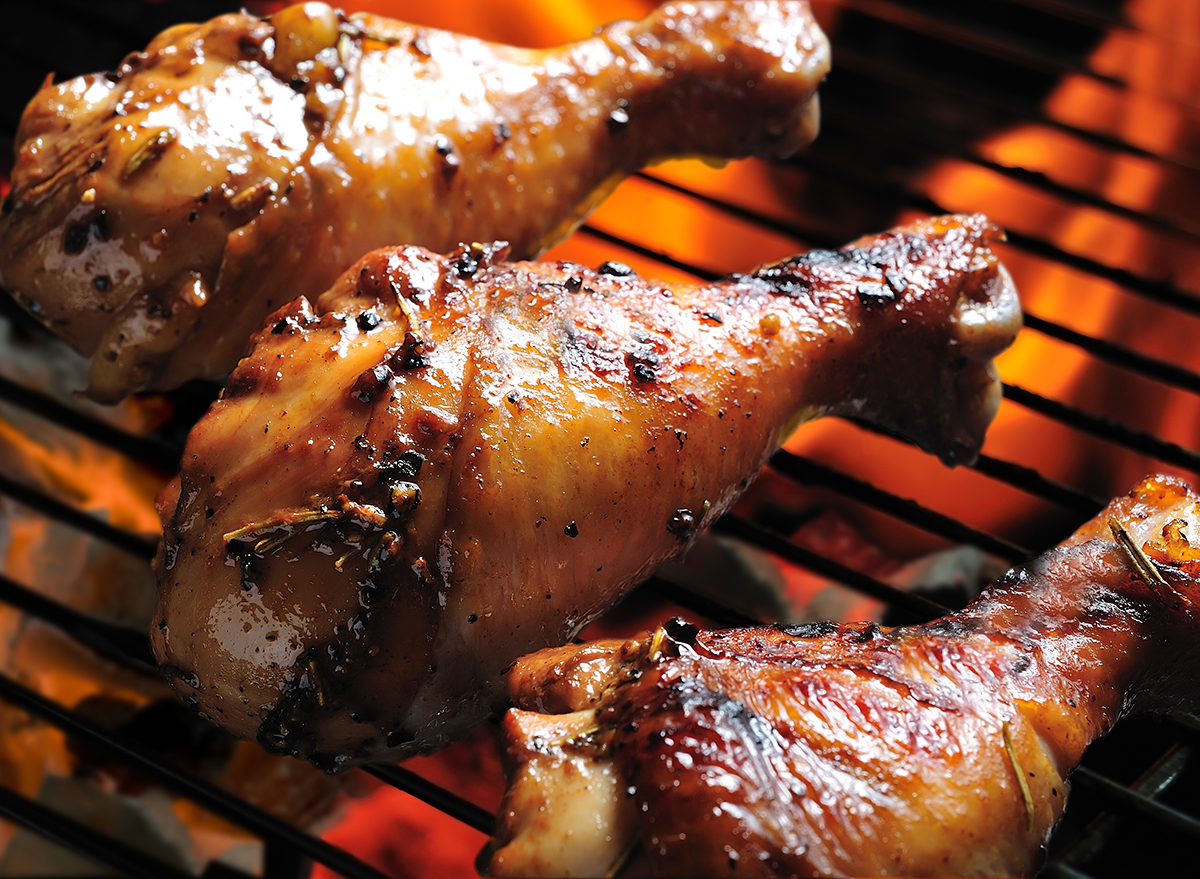
You won't want to overcook your chicken, but make sure to give it a good char and then let it rest before slicing, Whitsell suggests. "People have a misconceived notion about chicken," he says. "If cooking with bone-in, having the meat pink near the bone is OK, and you want juices to run out when slicing it. If there's no juice, then it's overcooked."
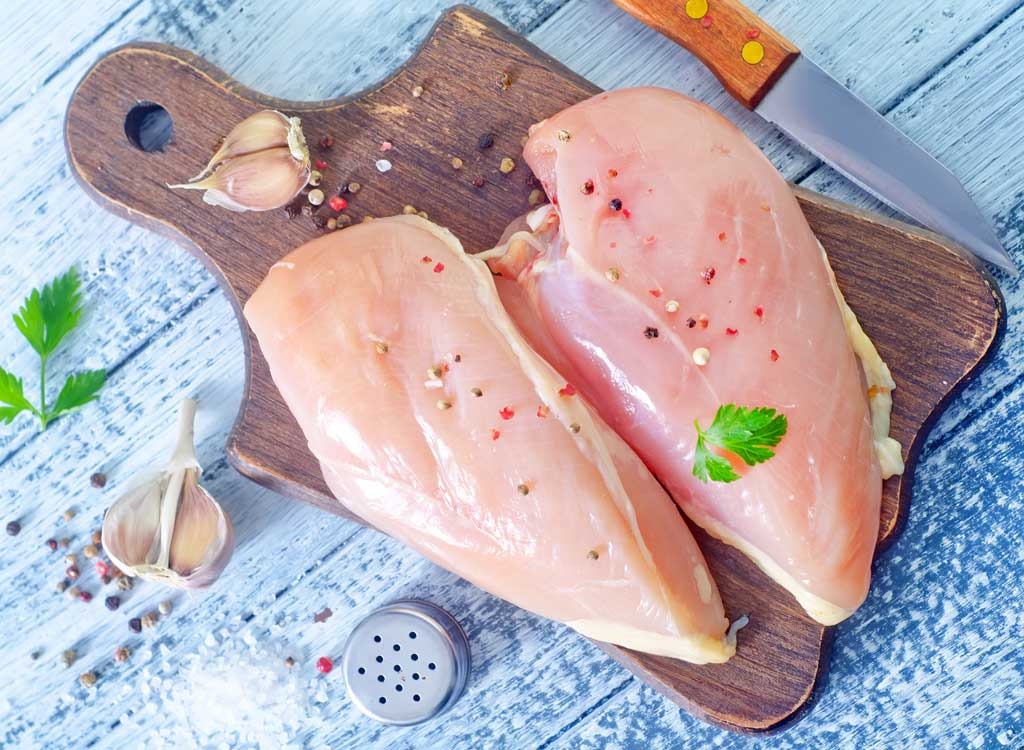
There are three easy ways you can check to see if your raw chicken has peaked far past its prime, according to Claudia Sidoti, chef, food industry leader, and member of the Eat This, Not That! Medical Expert Board who's opening a restaurant in upstate New York this summer. First, Sidoti advises looking for a change in color. "Fresh, raw chicken should have a pink, fleshy color. As it starts to go bad, the color fades to a shade of grey," Sidoti previously told Eat This, Not That.
Second, Sidoti says to trust your nose. "Raw chicken that has gone bad has a very potent odor. Sometimes it can be described as a sour smell. If the chicken has taken on an odor of any sort, it's safest to toss it," she says.
And if you're thinking of pairing some vegetables with your bird, be sure to avoid these 8 Common Mistakes You're Making When Cooking Veggies.
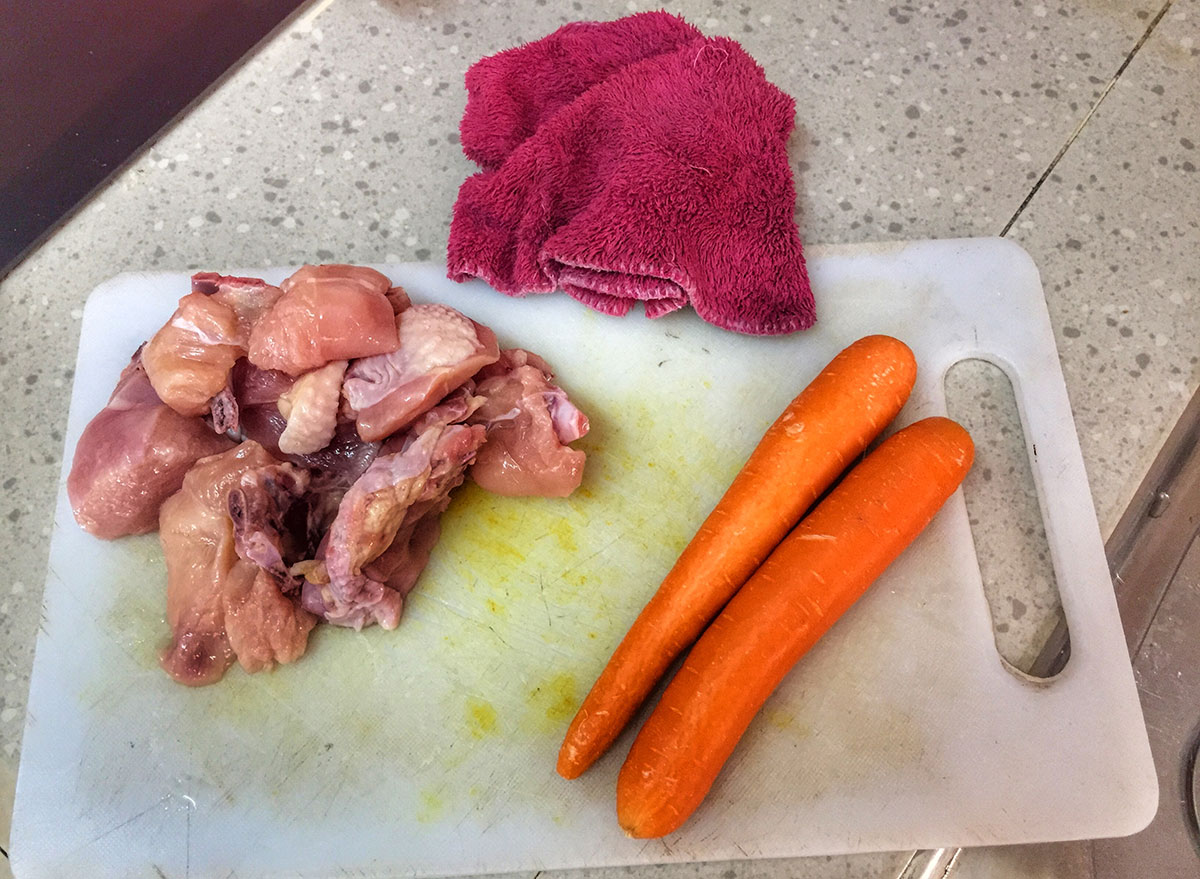
Getting two cutting boards in different colors can help you stick to the best food safety rules. Simply reserve one for meat, poultry, chicken, and seafood and the other for things like bread and veggies. Plus, you'll want to make sure you disinfect your boards after use. According to the Academy of Nutrition and Dietetics, after cutting up chicken, you should clean the board "in hot soapy water, then disinfect with chlorine bleach or other sanitizing solution and rinse with clean water."
Also, make sure that you never place cooked meat on a plate that was used to hold raw meat, and always wash your hands before and immediately after handling raw meat.
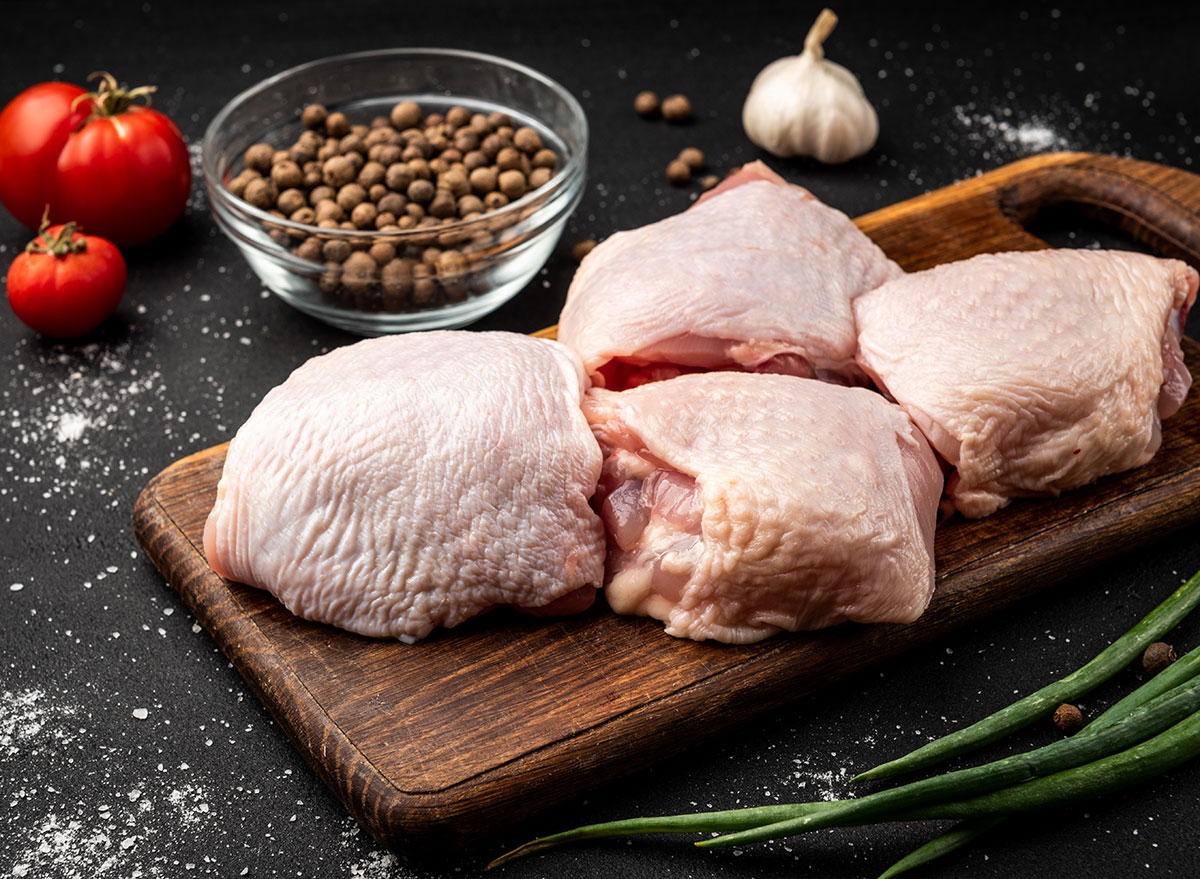
If you start with factory-farmed, frozen chicken, odds are good your meal will taste dry and won't have as much flavor as it could. Whenever possible, opt for organic, free-range, and locally produced chicken out of a fridge (instead of the freezer). These options are more likely to retain moisture and be packed with flavor.
To know when your meats are done, here are the 9 Best Meat Thermometers Your Kitchen Needs, According to Experts.
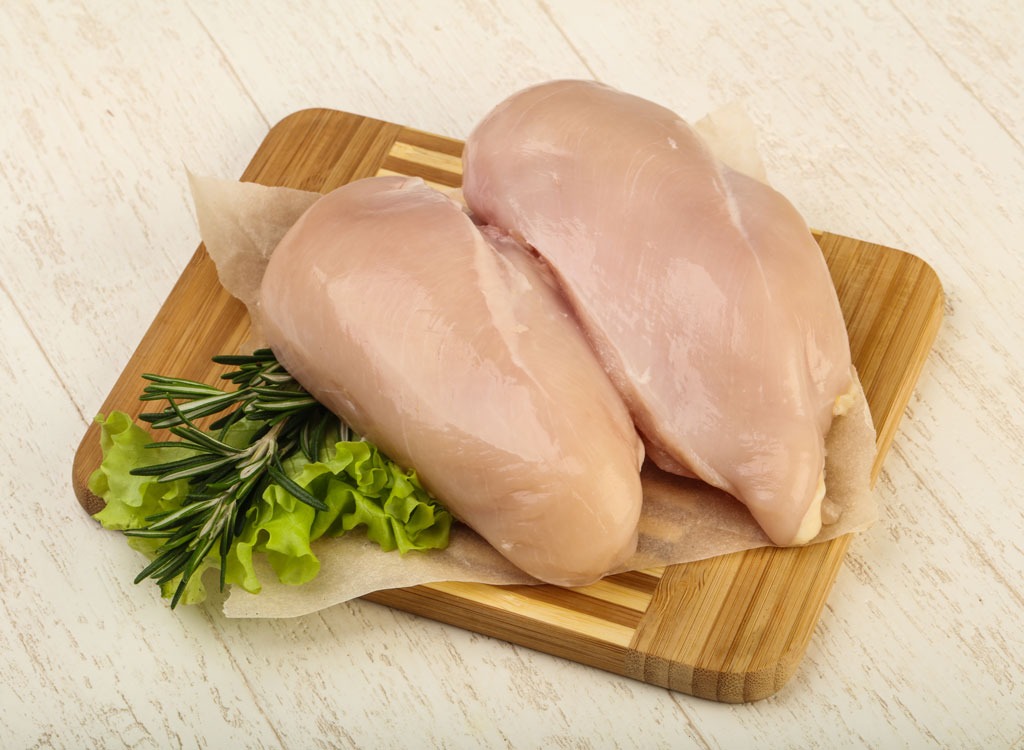
Rinsing off chicken before cooking may seem like a good way to improve its hygiene, but food safety rules maintain that this makes contamination more likely to occur. The process of washing chicken spreads potentially harmful bacteria onto your sink and countertops, and it's unlikely to serve any real benefit. So skip the chicken bath and move on.
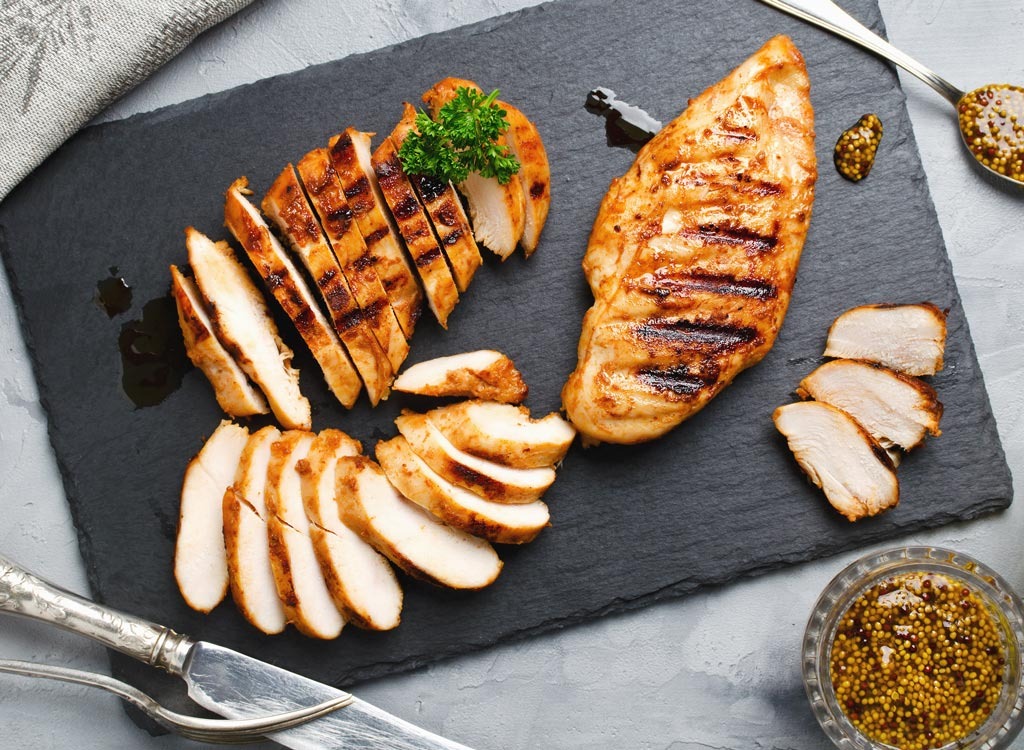
While it may not be a good idea to wash your chicken, it is a good idea to dry it. This may sound counterintuitive; after all, nobody likes to eat dry meat. But most people do like the outside of their chicken to have a lovely brown crisp—and that's only achievable when you start with a dry bird. For the best results, allow the meat to air-dry outside of any packaging for a few hours in the fridge. Then, remove it from the fridge and pat it dry with paper towels right before cooking.
Looking to cook a meal that's tasty with a kick of spice? Here are the perfect Instant Pot Buffalo Chicken Wingsyou can make.
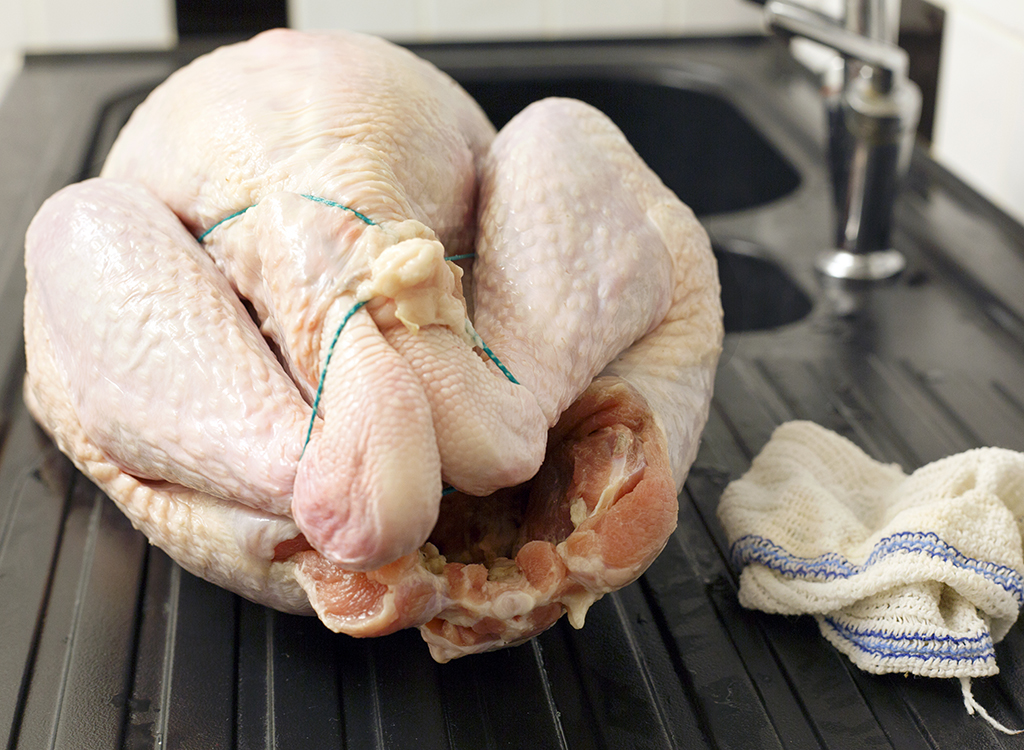
Rare is the home chef who hasn't tried this approach to meat thawing, but here's why you should avoid it: Room temperatures provide a warm breeding ground for all sorts of potentially harmful bacteria. And because the outside of the meat is likely to thaw faster than the inside, this means the outside will be vulnerable to these bacteria for much of the time that the inside is still thawing.
To avoid this issue, consider thawing the chicken overnight in the fridge or place it in a plastic bag and submerge that bag in cold water. (Just be sure to replace the water often so temperatures in the bowl never rise to room temperature.)
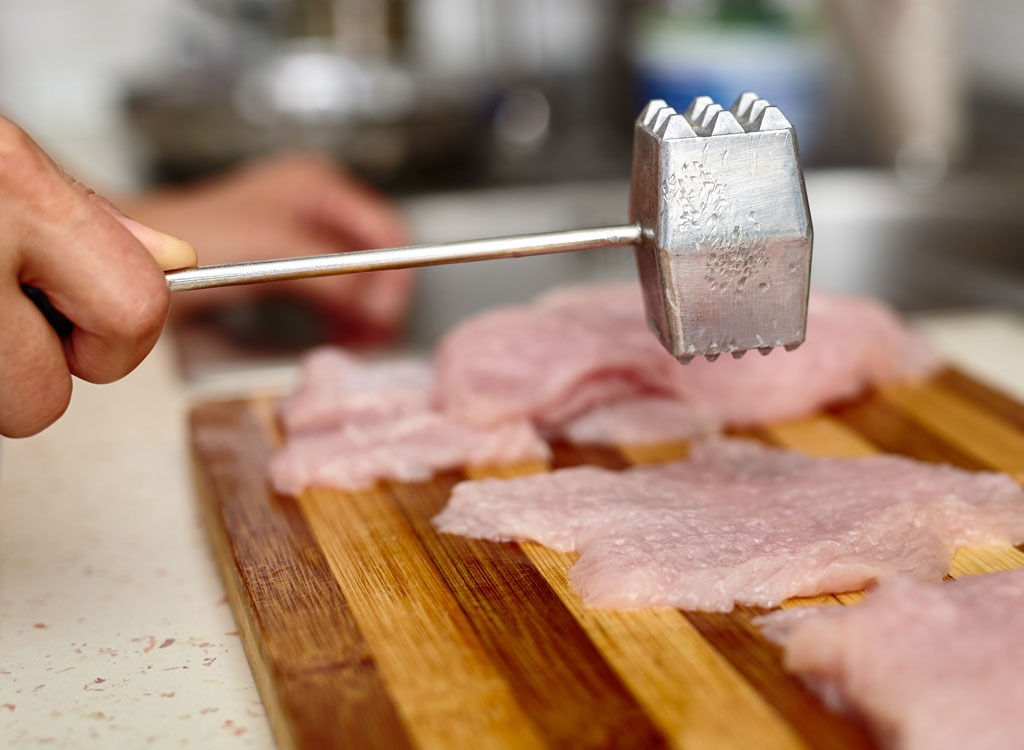
We all know it's critical to tenderize a steak before cooking it, but fewer people realize it's just as important to pound out chicken breasts before tossing them into a pan.
Pounding chicken is good for several reasons: It helps tenderize the meat, it reduces the cooking time (which can minimize the risk of overcooking), and it makes it easier to achieve an even cook. For best results, make sure the breasts are an even thickness; aim for approximately half an inch.
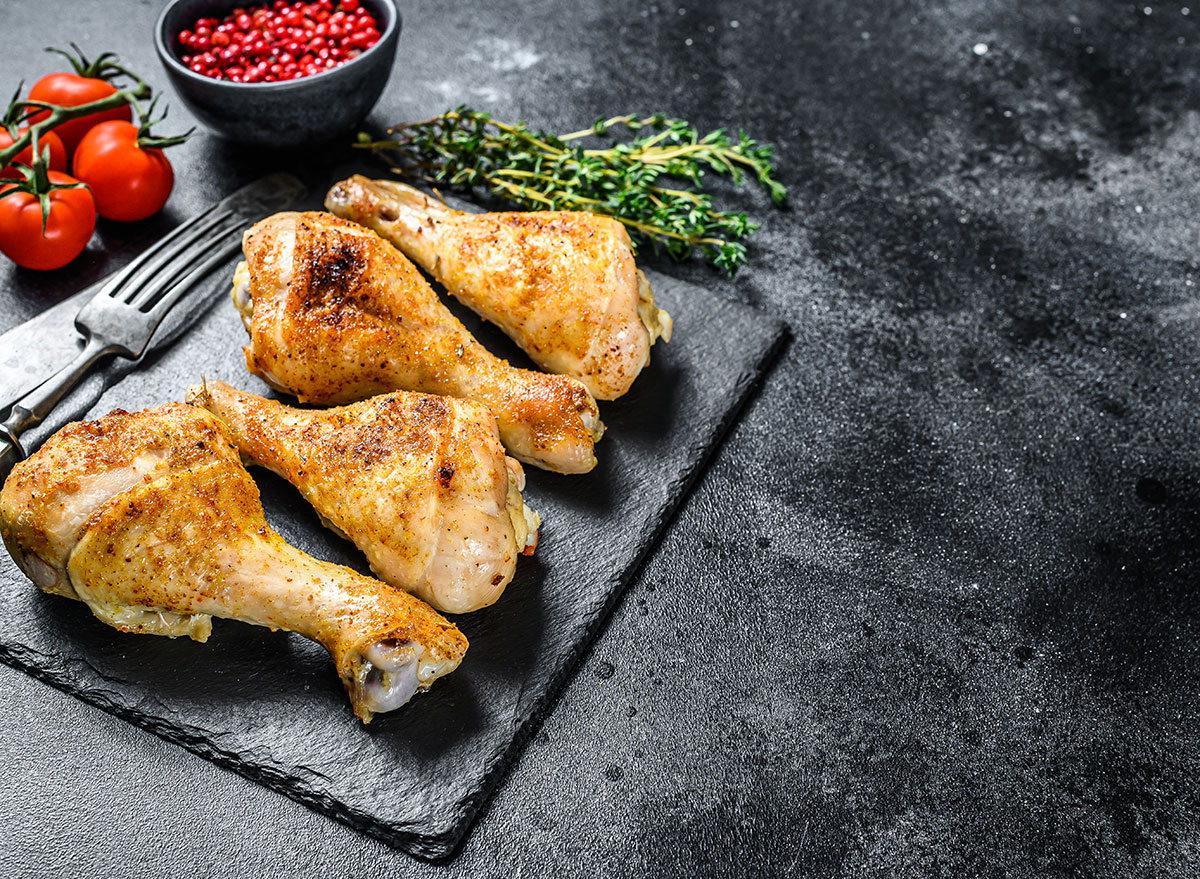
While it's true that you don't want to let the meat sit around on the counter for ages before cooking it, it is a good idea to let the thawed meat sit out of the fridge for 15 minutes or so before cooking it up. This will help ensure that the inside and outside of the meat is generally the same temperature, which increases the chances that the chicken will cook evenly.
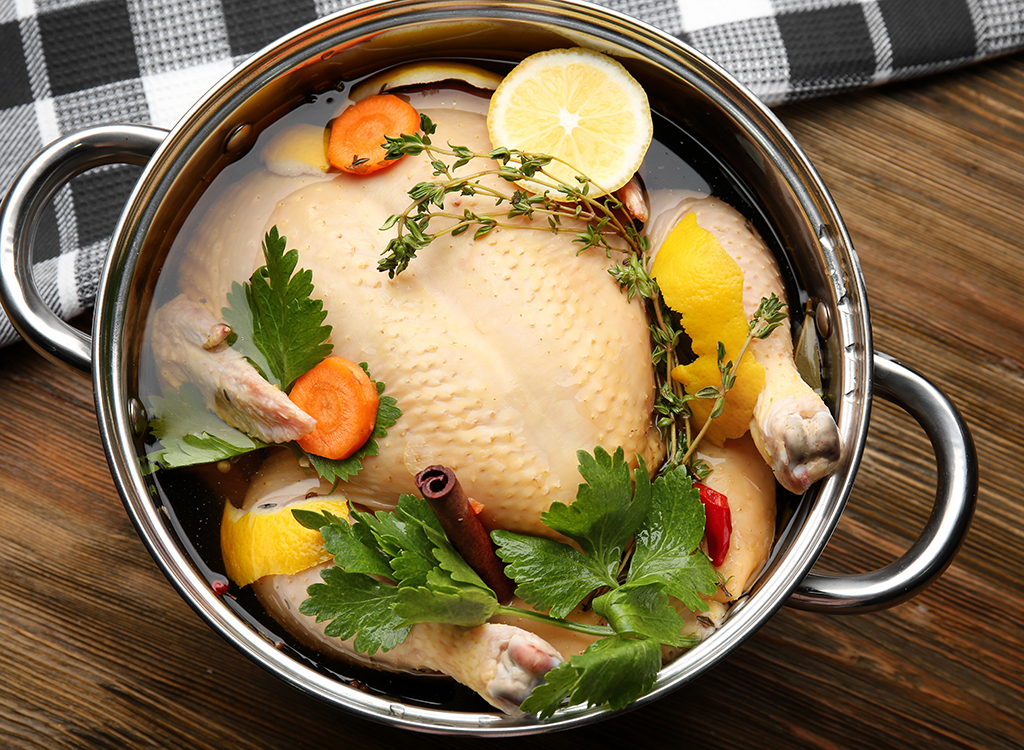
Because you want to make sure the chicken is fully cooked, you might end up cooking it for too long. "This is where brining can save the day," says Derek Wolf, fire cooking enthusiast and owner of Over the Fire Cooking. "What you do is soak your chicken in a blend of herbs, spices, sugar, water, and salt for a couple hours in order to create a perfect amount of moisture inside the meat. It helps to prevent over-cooking and to enhance flavor. Plus, it's super simple. My favorite brine consists of Morton's Coarse Kosher Salt, thyme, black pepper, sugar, and water."
RELATED: Easy, healthy, 350-calorie recipe ideas you can make at home.
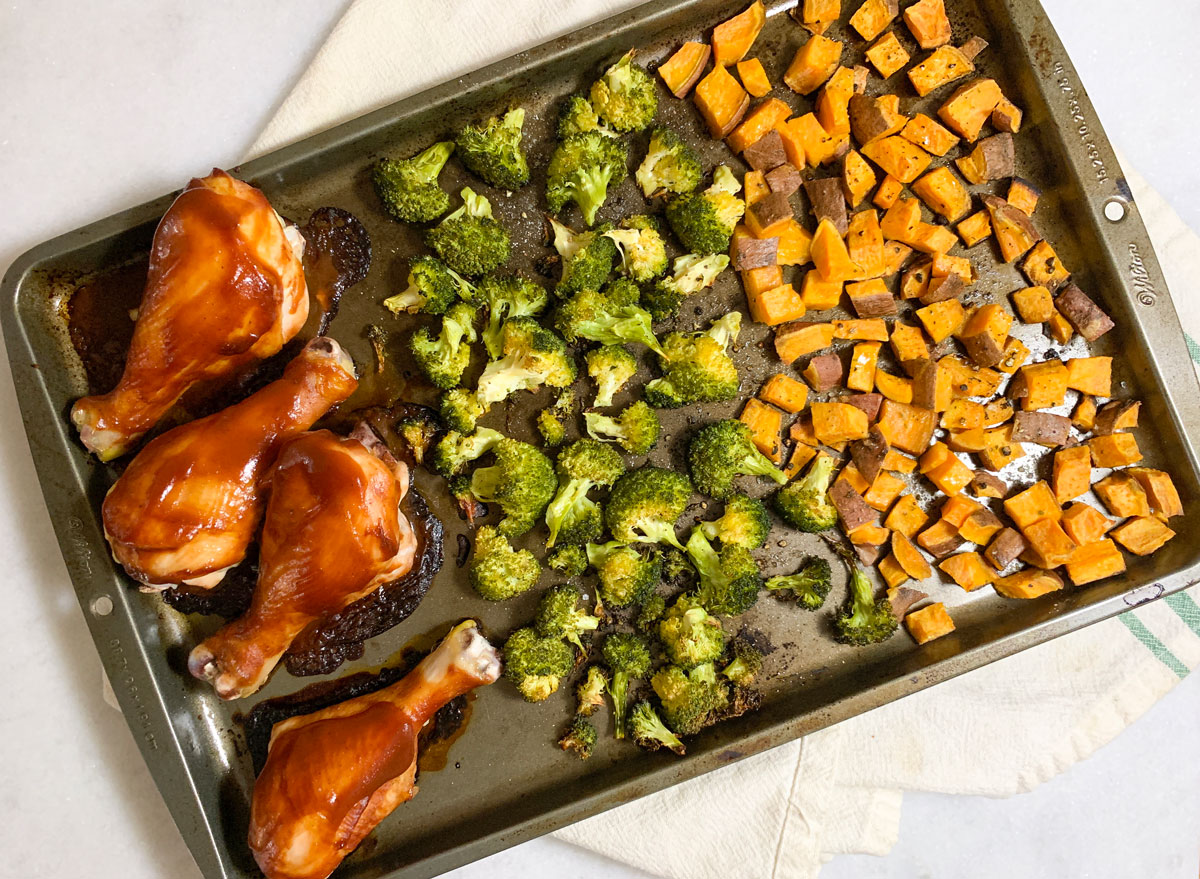
"Ever found yourself with not enough space to cook the chicken breast? In a desperate attempt to speed up the process, you shove all the chicken into one skillet hoping it all fits," Wolf says, reminding us all of this common blunder. "What ends up happening is the meat cooks unevenly due to being overcrowded." Additionally, overcrowding can cause your chicken to steam rather than help it get that nice caramelized-brown sear.
Thankfully, there's a quick fix that can salvage your dinner plate of undone meat. Wolf has a solution that will come in handy if you're already mid-process. "When you run into space issues, make sure to give each piece of chicken enough room to cook. Meat needs the heat rising from all sides in order to fully cook. Just grab another skillet or wait for the chicken already cooking to finish," Wolf says. "Better to have fully cooked chicken than not!" We couldn't agree more, especially because chicken is one of the high-risk foods that are most likely to be contaminated.
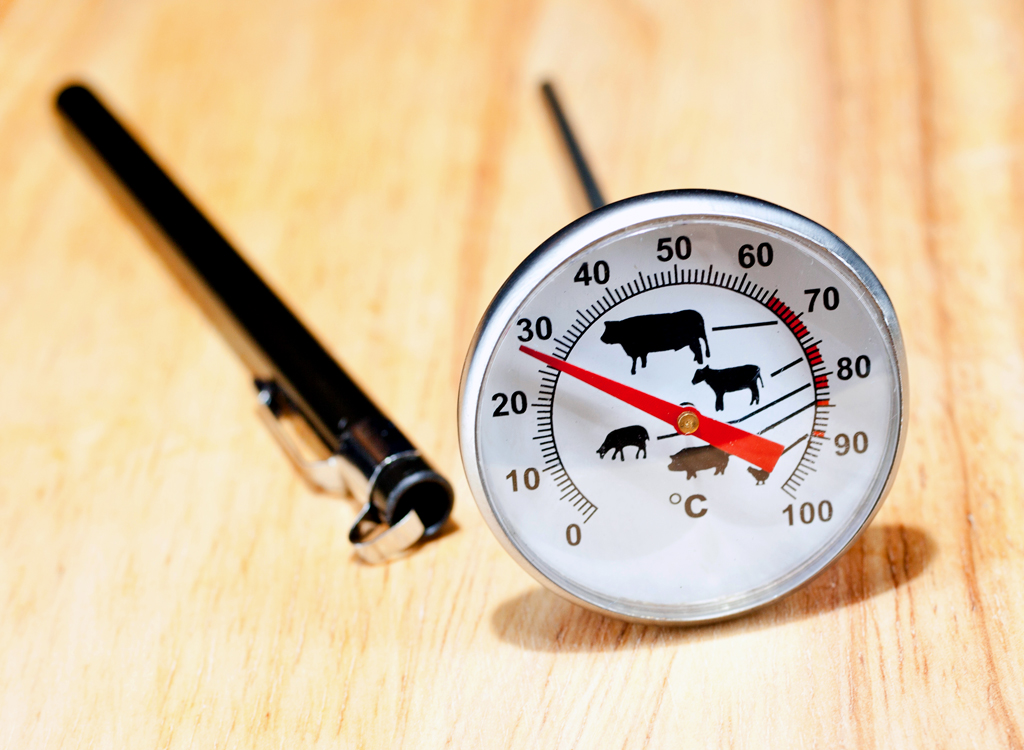
A lot of recipes give you an approximate time for cooking chicken dishes, so it's reasonable to assume that time is the most important factor. But in reality, temperature trumps time any day of the week.
Ameat thermometer is the only tool that can give you true confidence that the meat is fully cooked. Chicken should be cooked to 165 degrees Fahrenheit; to test it, insert a meat thermometer into the thickest part of the meat (without touching a bone). Try to avoid cooking the meat beyond this temperature, because that's a surefire way to have dry meat on your hands.
And for more cooking tips, don't miss these 10 Chef Secrets for How to Cook Chicken Breasts Perfectly.
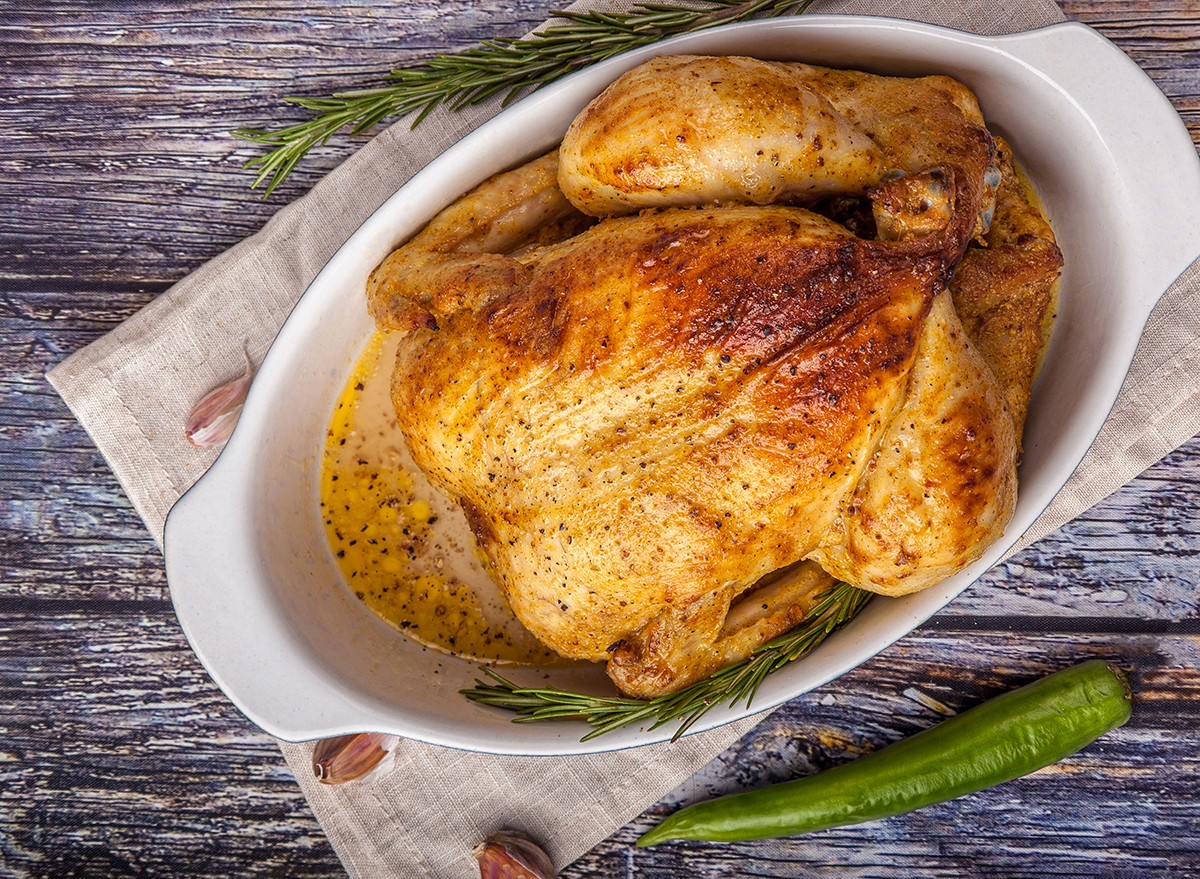
Forgetting to stuff the chicken's cavity before roasting is one way to end up with a desert-dry dinner.
"To add some extra moisture and flavor, cut a lemon, onion, or even an apple in chunks and place in the cavity along with a sprig or two of herbs or bay leaves. As the chicken roasts, these aromatics will release moisture and flavor," Sidoti says. "Just remember to remove the stuffing before carving."
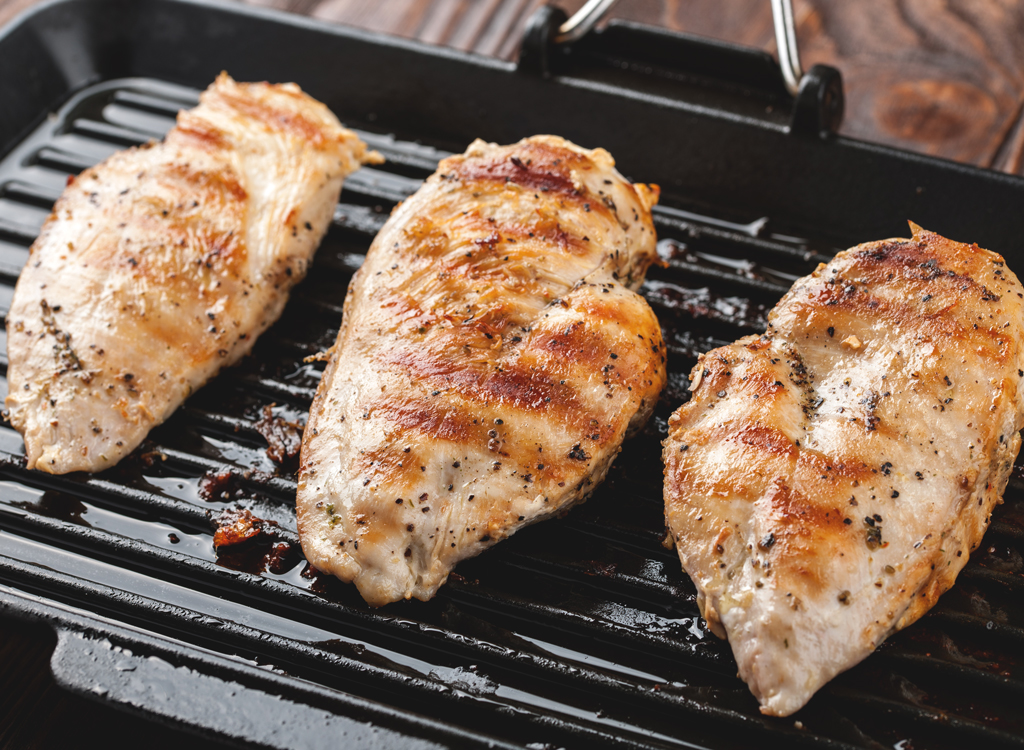
"When grilling chicken, finding the right time to flip is essential," Wolf says. "If you flip too early, then you end up ripping off the top layer of the caramelized meat."
"The best way to prevent this is twofold: First, have a clean grilling surface. When cooking chicken, make sure that the residue from the previous cooking session is cleaned off, which will prevent the chicken from sticking. Secondly, wait for the chicken to naturally release. When you first place the meat on the grill, it will stick from the heat, but after a while, it will slowly create an outside crusted layer. This layer will release from a clean grill grate at the right time. Just wait for it."
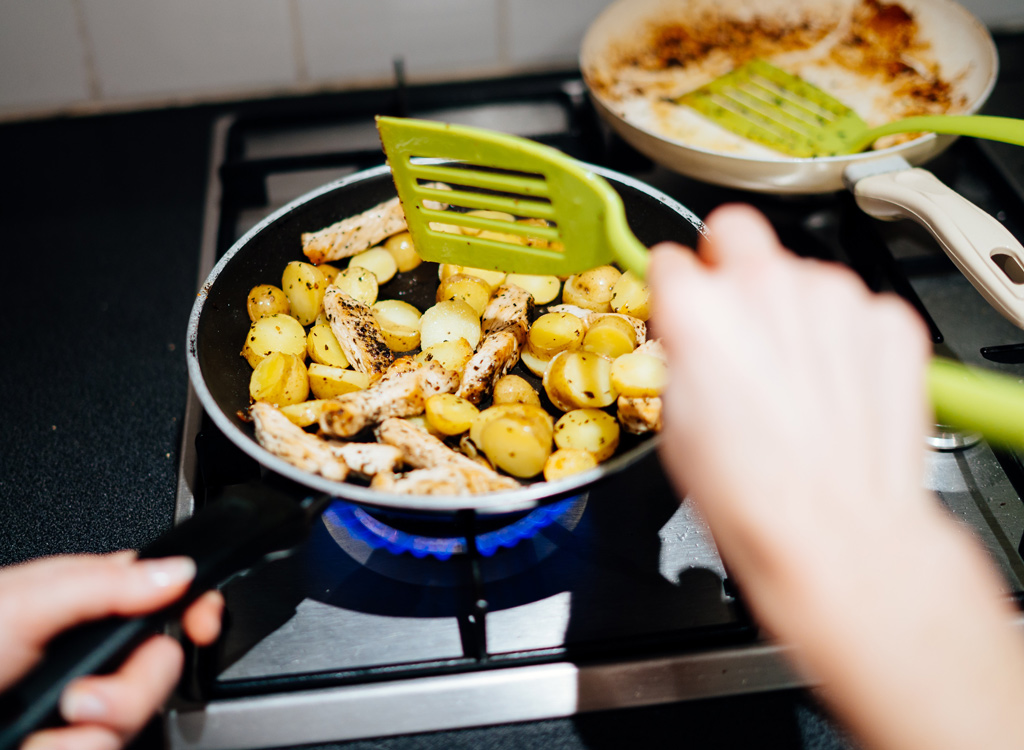
Moving the chicken around the pan too often is like pressing the elevator button again and again. Doing either won't get you results any faster.
"If you want a nice sear, try not to move the chicken for about five to seven minutes once in the pan. If the chicken is sticking, it's probably not ready and won't be golden brown," Sidoti says. "Also, try to avoid over-flipping. Turn it once and don't touch again for an additional five to seven minutes. Again, the goal is a golden brown color on each side."
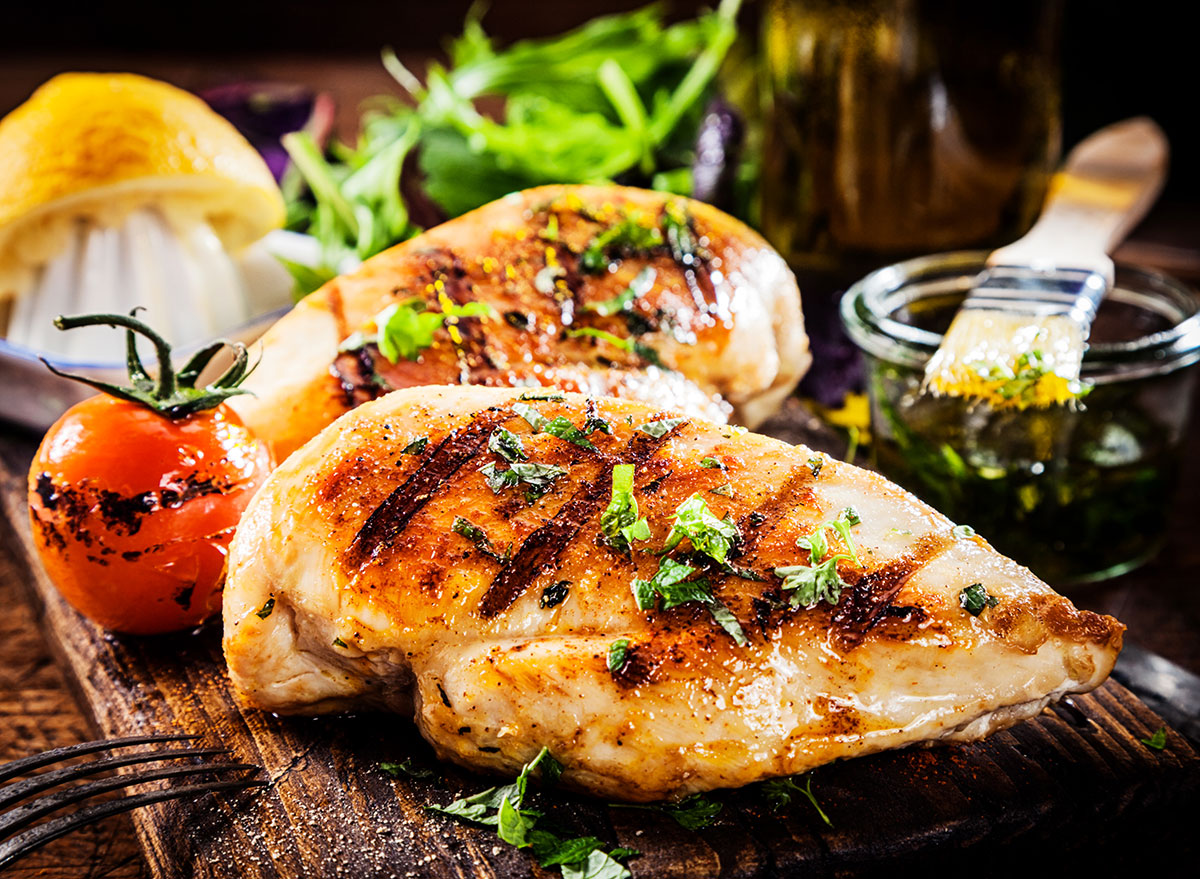
Chicken breasts can be a pretty thick piece of meat. Not only can they be up to two inches thick, but they can also be very thin at the other end. Because of the uneven thickness, the chicken will cook through at different rates, leaving you with overcooked chicken on one end and cooked (or even undercooked) meat on the other end.
To prevent uneven cooking, you can do one of two things. One option is to butterfly your breast. Carefully place your hand on the top of the breast and apply light pressure. Starting at the thickest part of the breast, take a sharp knife in the middle of the meat and begin to slide the knife down the breast until you've cut the fillet in half. You can either leave one edge of the meat connected (at which point if you opened up the sliced meat into one piece it would look like a butterfly), or you can separate the fillet. A second option is to pound the breast meat until it's entirely even. You can do this with a full breast or even with your sliced meat.
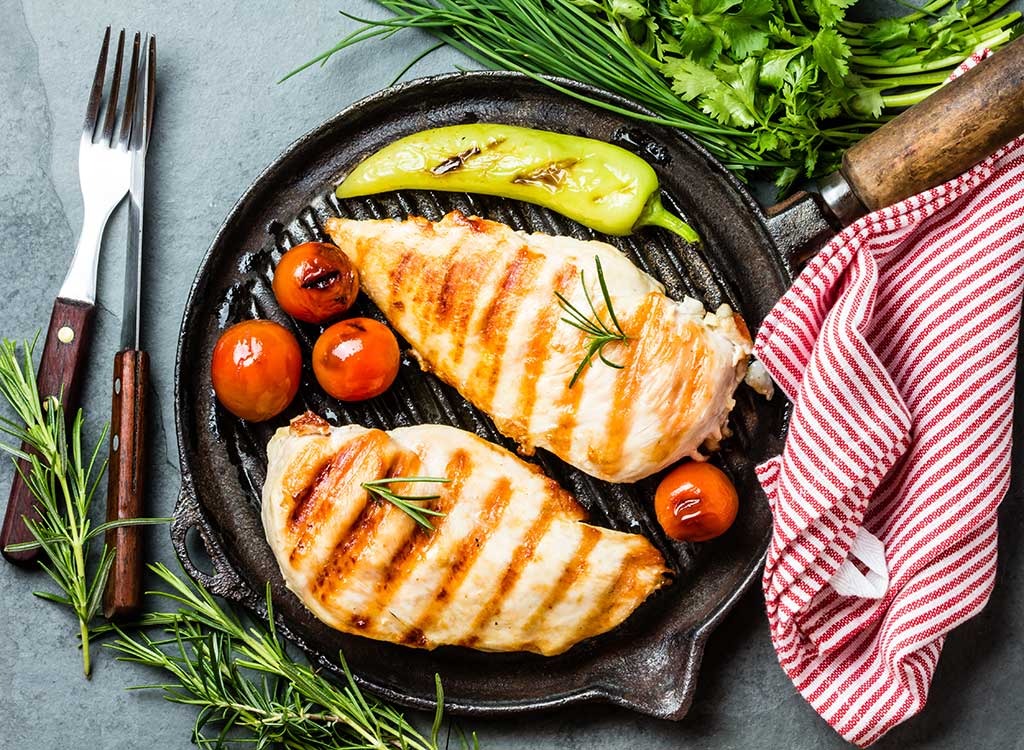
Yes, you really should let meat rest once you take it off the heat, no matter how tempting it looks to eat immediately. If there's one thing all chefs can agree on, it's this: it's important to let it rest for a bit before you dive in. This allows the juices to redistribute throughout the meat, which helps ensure a moister taste. Tent the chicken with some foil and let it rest for approximately 15 minutes before eating.
Now that you're armed with these tips and tricks, you're on your way to cooking chicken that's juicier and more flavorful than ever.
For more, check out these 108 most popular sodas ranked by how toxic they are.
How to Make Oven Gilled Chicken Not Smell
Source: https://www.eatthis.com/how-to-cook-chicken-mistakes/